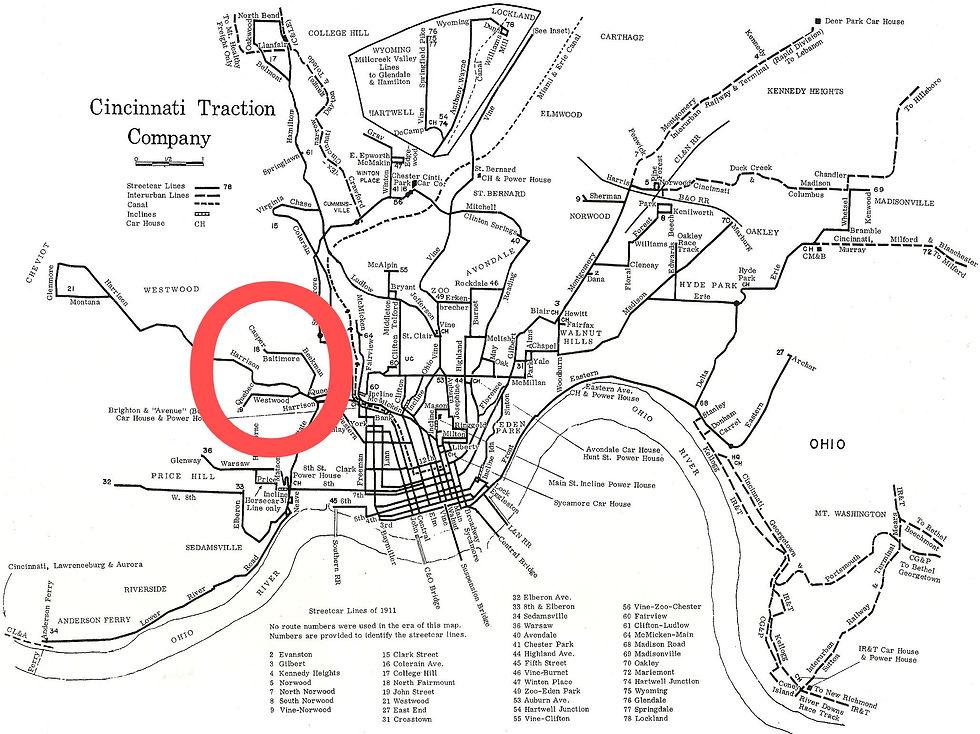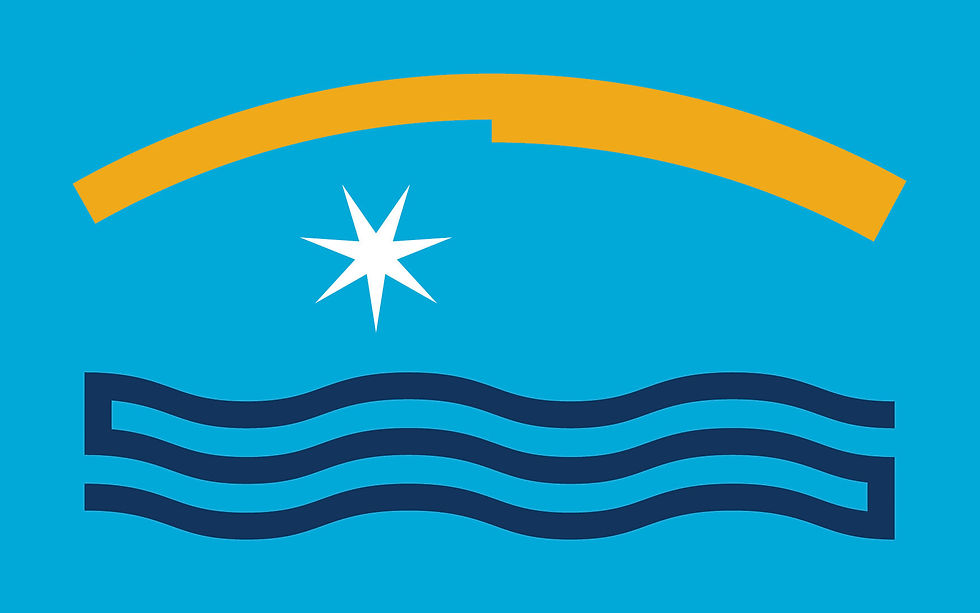North and South Fairmount: Pass-Through Neighborhoods in the Hills
- Anthony Gustely

- Sep 27, 2020
- 4 min read

It's already my fourth week of venturing through Cincinnati, and we're continuing to snake through the West Side. This week I visited North and South Fairmount: 2 lesser-known neighborhoods that have been forgotten over the years. Their history is characteristic of other first ring suburbs in the Queen City. Once vibrant communities with plenty of businesses, churches, and schools, North and South Fairmount became pass-through neighborhoods.
Both neighborhoods are a part of the broader history of the Fairmount District. Situated in the hills just west of the Mill Creek, the Fairmount area is now present-day Millvale, English Woods, and the 2 Fairmounts. Originally a "sprinkling" of few farm homes in the early 1800s, the neighborhood changed rapidly during industrialization. Several factories were built along the Mill Creek on the east side of the neighborhoods at the base of the hills. North and South Fairmount were the original homes to German and Italian immigrants.
In the mid to late 1800s, it would seem like the Fairmount area was slated for success: a slew of factories along the Mill Creek, an employment base from the influx of migrants, and land to build homes. By the late 1800s, the Cincinnati streetcar has begun a period of rapid growth, establishing streetcar lines throughout Cincinnati proper with its new electric streetcar technology. A map of the Cincinnati Streetcar from 1911 shows lines 18, 19, and 21 running through the North and South Fairmount area:

Decline of the neighborhoods began post-war in the 1940s. Westwood, Bridgetown, and Mt. Airy presented greener landscapes and larger homes for recently married couples looking to start a family. The older and more compact housing stock within the Fairmount neighborhoods was no match to these expanding neighborhoods with more land area. Around the same time, the city began a transition from the street car to the bus system. The rise of the automobile, in tandem with suburbanization, were catalysts for decline within North and South Fairmount. As people moved out, more and more cars were crossing the Western Hills Viaduct to get to their homes outside of the city. Queen City and Westwood Avenue -- which run east and west through South Fairmount -- were converted to one way roads in the 1970s to move traffic more quickly in and out of the City. With no major throughfares through its bounds, North Fairmount was also doomed.
North Fairmount

As one of the smaller neighborhoods in the City with 1,812 residents, North Fairmount is the 38th largest neighborhood in Cincinnati. Although it has experienced a large population loss over the years, North Fairmount has become home to a significant Latin American population. Located next to the neighborhood's Community Center, St. Leo's Church has been a staple in the community for decades. The Church, founded in 1886, is now home to Burundian, Congolese and Guatemalan immigrants, many of whom are refugees. The exterior of the Church is beautiful, occupying a narrow corner at the intersection of St. Leo Place and Baltimore Avenue.

Tucked into North Fairmount's residential streets is Baltimore Pike Cemetery. Located on about 100 acres of land on the western hills, the cemetery is immaculately landscaped and offers views into downtown Cincinnati and Clifton.


When I was driving around North Fairmount one of the elements of the neighborhood that stood out to me was its tree cover. The neighborhood is filled with greenery that is matured and dense. Additionally, I noticed that, although old, the housing stock is actually relatively varied. While some of the homes are vacant, others have been well maintained and preserved.

South Fairmount
Similar to North Fairmount, South Fairmount is one of Cincinnati's smaller neighborhoods, housing 2,368 residents. In the early 1800s, the neighborhood was known for its vineyards, which succeeded due to the rocky soil on the hillsides around the Lick Run Basin. South Fairmount is primarily a pass-through neighborhood because of its location adjacent to the Western Hills Viaduct. Westwood and Queen City Avenues run east/west through the middle of the Lick Run Basin. Once flourishing with community businesses, the area in between the two roads is being converted into urban parkland.
Dubbed the Lick Run Greenway Project, the goal of the project is to accommodate for increased stormwater runoff stemming from the combined sewer system. Cincinnati's combined sewer system means that during a heavy rain, stormwater pipes overflow and mix with raw sewage, draining into the Mill Creek and then into the Ohio River. Every year, about half a billion gallons of sewage - mixed with stormwater - overflow from the Lick Run watershed into the Mill Creek. the Lick Run Project will daylight the stormwater pipe, separating it from the sewage pipe. The mile-long project will include a park, pond, landscaping, and pedestrian walkways along the waterway. Mimicking a natural stream, the Lick Run project will improve quality of life for South Fairmount residents, serve as an economic boost for the neighborhood, and attract nearby Cincinnati residents to use the park. Check out the video here to see a view from Queen City Avenue of the Lick Run Project.

Located along Queen City Avenue is St. Francis Court Apartments. Formerly the St. Francis Hospital, the beautiful Queen Anne style building is listed on the National Register of Historic Places. Today, the building serves as apartment-style living for seniors over the age of 62.

I believe there's great hope for North and South Fairmount. St. Leo's Church and the community center have the potential to become a node of activities for a broader community that extends past the neighborhood. The Lick Run project holds the potential of becoming a recreational hotspot for Cincinnatians, drawing business and jobs into the neighborhood along the way. Gentrification is often a cause for concern when we talk about neighborhood redevelopment and resurgence. I hope that redevelopment efforts in the Fairmounts are community focused and led, and I look forward to visiting the Lick Run project once it's completed!

Stay tuned for next week's visit to East Westwood and the Villages at Roll Hill! See you then :)






Comments